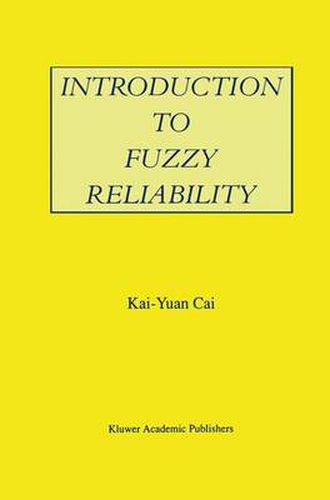Readings Newsletter
Become a Readings Member to make your shopping experience even easier.
Sign in or sign up for free!
You’re not far away from qualifying for FREE standard shipping within Australia
You’ve qualified for FREE standard shipping within Australia
The cart is loading…






This title is printed to order. This book may have been self-published. If so, we cannot guarantee the quality of the content. In the main most books will have gone through the editing process however some may not. We therefore suggest that you be aware of this before ordering this book. If in doubt check either the author or publisher’s details as we are unable to accept any returns unless they are faulty. Please contact us if you have any questions.
Treating fuzzy methodology in hardware reliability and software reliability in a relatively systematic manner, this work is divided as follows: Chapter 1 places reliability engineering in the scope of a broader area, i.e. system failure engineering. Readers will find that although this book is confined to hardware and software reliability, it may be useful for other aspects of system failure engineering, like maintenance and quality control. Chapter 2 contains the elementary knowledge of fuzzy sets and possibility spaces which are required reading for the rest of this book. This chapter is included for the overall completeness of the book, but a few points (e.g. definition of conditional possibility and existence theorem of possibility space) may be new. Chapter 3 discusses how to calculate probist system reliability when the component reliabilities are represented by fuzzy numbers, and how to analyze fault trees when probabilities of basic events are fuzzy. Chapter 4 presents the basic theory of profuse reliability, whereas Chapter 5 analyzes the profuse reliability behavior of a number of engineering systems.
$9.00 standard shipping within Australia
FREE standard shipping within Australia for orders over $100.00
Express & International shipping calculated at checkout
This title is printed to order. This book may have been self-published. If so, we cannot guarantee the quality of the content. In the main most books will have gone through the editing process however some may not. We therefore suggest that you be aware of this before ordering this book. If in doubt check either the author or publisher’s details as we are unable to accept any returns unless they are faulty. Please contact us if you have any questions.
Treating fuzzy methodology in hardware reliability and software reliability in a relatively systematic manner, this work is divided as follows: Chapter 1 places reliability engineering in the scope of a broader area, i.e. system failure engineering. Readers will find that although this book is confined to hardware and software reliability, it may be useful for other aspects of system failure engineering, like maintenance and quality control. Chapter 2 contains the elementary knowledge of fuzzy sets and possibility spaces which are required reading for the rest of this book. This chapter is included for the overall completeness of the book, but a few points (e.g. definition of conditional possibility and existence theorem of possibility space) may be new. Chapter 3 discusses how to calculate probist system reliability when the component reliabilities are represented by fuzzy numbers, and how to analyze fault trees when probabilities of basic events are fuzzy. Chapter 4 presents the basic theory of profuse reliability, whereas Chapter 5 analyzes the profuse reliability behavior of a number of engineering systems.